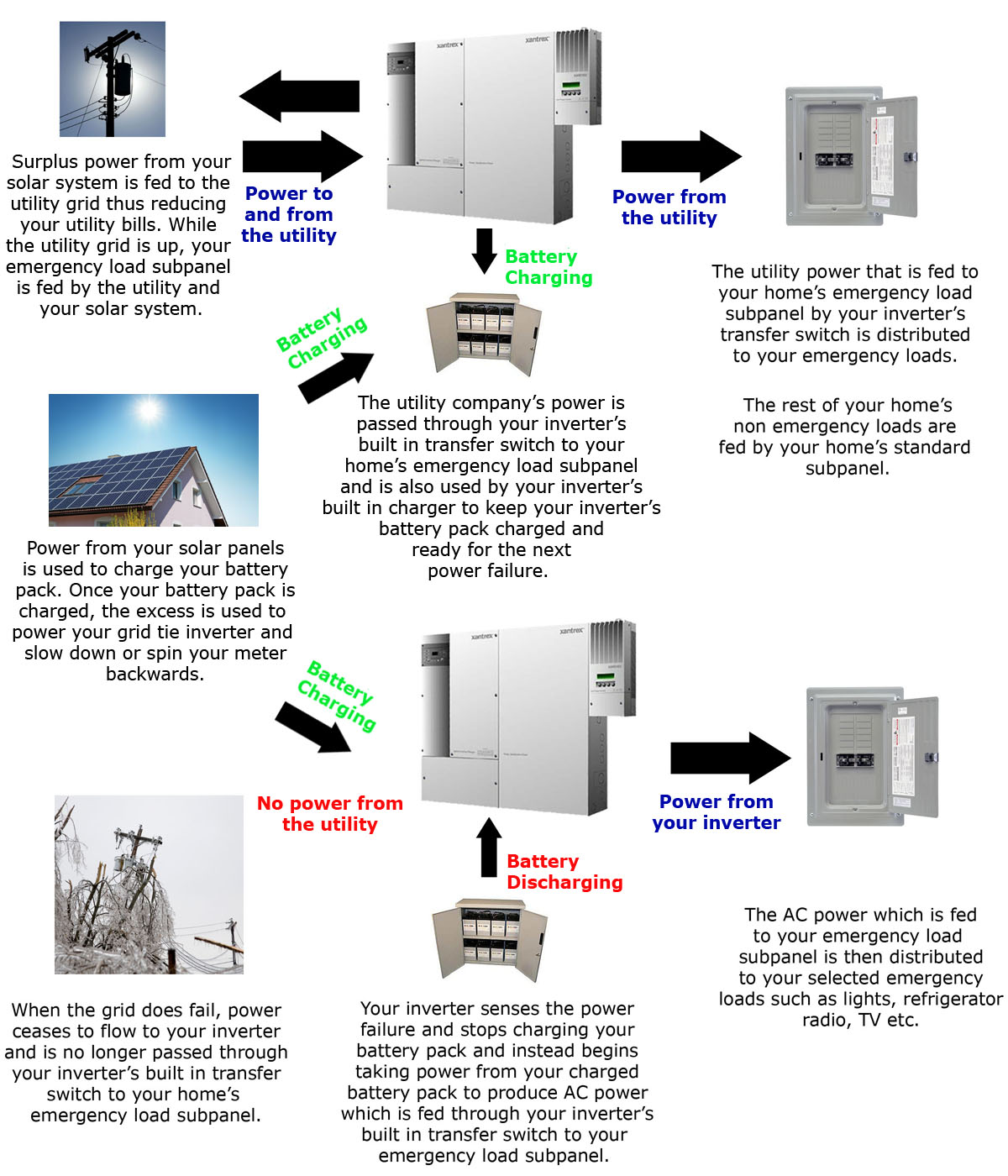
HOW A BATTERY BACKED UP SOLAR GRID TIE EMERGENCY POWER SYSTEM WORKS

To summarize: When utility power is available, any excess power that is produced by your solar system is fed through your meter slowing it down or spinning it backwards. Power from both your inverter and your utility is passed through the inverter's built in transfer switch to your emergency load subpanel to your home's protected loads. depending on your battery's state of charge and the amount of available sunshine, utility power may be used through the inverter's built in battery charger to keep your inverter's battery pack charged and ready for the next power failure. The solar charging system will work in concert with the utility grid power to keep the battery pack charged and also prolong the system's runtime during an extended utility power failure.
When a power failure occurs, the inverter automatically begins converting DC power from your charged batteries into AC power that is used by your emergency loads such as your refrigerator, lights, radio, TV etc.
The emergency power that is produced by this type of system is extended because the battery pack is being recharged by the solar modules. A smaller battery pack is needed when compared to a non solar charged battery backup system because the battery pack is continuously being recharged when the sun is shining. limitless run times are possible depending on the capacity of the battery pack, the power consumption of your loads, the size of your solar array and the amount of available sunshine.
Once the power from the utility company has been restored, this system will automatically pass the utility's, power through its built in transfer switch to your emergency loads for normal operation and will also begin along with your solar modules, recharging your battery pack, in preparation for the next power failure. Once your battery pack is fully charged, your system will resume feeding excess power to the utility grid, causing your meter to once again slow down or spin backwards. Under normal circumstances, in a typical installation, this type of system is entirely automatic. There are no manual switches that need to be activated in the event of a power failure or while recharging the battery pack.